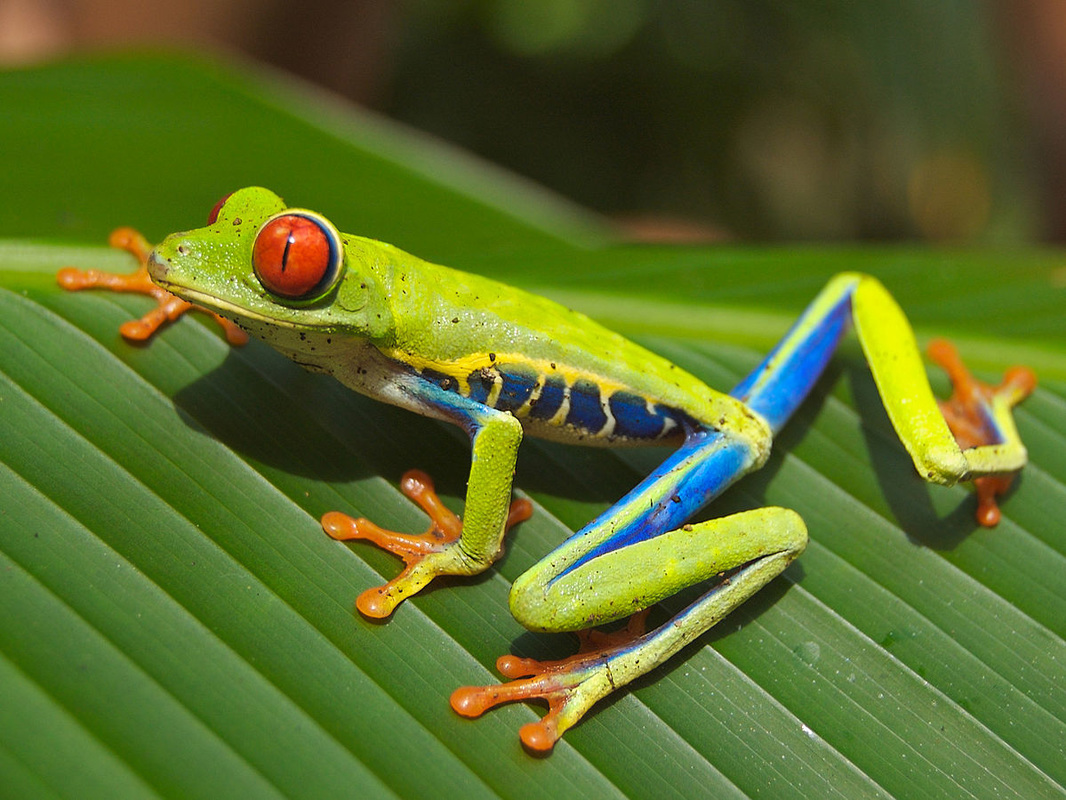|
People who care about amphibians (and we sure do) have been very worried in recent years, and for good reason. Since the late 1980s, amphibian populations have undergone dramatic declines, including mass die-offs and local extinctions on an unprecedented scale. More than 30% of global amphibian species are listed as "threatened" by the International Union for the Conservation of Nature (IUCN) red list, and that's not counting the many species about which we don't have adequate data. Scientists have been struggling to explain these population declines, which probably result from a combination of factors, including habitat loss, pollution (including in particular endocrine-disrupting pollution), changing global climate, invasive and introduced species, and the loss of ozone layer protection (UV radiation turns out to be very bad for the skin, eyes, and eggs of amphibians). But we know for a fact that there's one more major threat to amphibians: disease, particularly that caused by the chytrid fungus. Chytridiomycosis is an infectious disease of amphibians caused by the chytrid fungus (Batrachochytrium dendrobatidis). It has been directly implicated in large population declines or even extinctions in North, Central and South America, parts of Australia, and the Caribbean, but is found (with varying degrees of prevalence) almost worldwide. In some amphibian populations, infection will cause only a few deaths, while in others there will be 100% mortality. Once an animal is infected, the fungus spores will put down roots into the skin. As the density of fungus increases, infected amphibians lose the ability to properly breathe, hydrate, osmoregulate (manage the water/electrolyte composition of body fluids), or thermoregulate (manage body temperature).
We have very limited knowledge about why the disease is more fatal in some populations than others, a poor understanding of how it is transmitted, and (at least so far) no ability to cure wild populations, although individuals can be cured in a lab with heat therapy or anti-fungal drugs. But scientists don't all agree on how important the threat posed by chytrid is relative to other threats to amphibians, documented examples of high mortality rates are certainly worrisome. There is some evidence that susceptibility depends in part on the microorganisms living on the amphibian's skin, and that certain bacteria might help prevent infection. Research also shows that exposure to pesticides can make frogs more vulnerable to chytridiomycosis infection. Now for a little bit of good news: in a recent study, researchers found that projected climate change conditions will be less favorable for the fungus (which doesn't like it too warm) than current climatic conditions. They also found evidence that frogs living in the Albertine Rift (a hotspot for amphibian biodiversity) in Africa carry the fungus at low levels while remaining in overall good health. Learn more about the paper here. If you want to learn more about amazing amphibians, you can do some reading here, visit the IUCN page for amphibians, or read the 2005 Amphibian Conservation Action Plan here. If you want to support global amphibian conservation, you can donate to groups like the IUCN or Amphibian Ark (which is working to create captive populations of many threatened amphibian species to help ensure they don't become extinct) or to organizations conserving amphibian habitat. If you keep captive amphibians, you can reduce threats to native populations by ensuring no diseases can be transmitted between your animals and wild amphibians (which is how chytrid was introduced in at least some locations). You can also learn more about best practice biosecurity guidelines for amphibians here). If you want to help your amphibian friends in your own backyard, you can build them a better habitat (get some advice from Operation Frog Pond here), contribute to citizen science projects on amphibians (like Frogwatch), and always avoid using harsh chemicals, fertilizers, pesticides, and weed killer, all of which are often harmful to amphibians, who absorb chemicals easily through the skin.
1 Comment
|
Field Notes
Archives
July 2021
Categories |
|
Partner with us! We are always looking for new schools, scientists, and non-profit organizations to partner with. Please contact us here to start a conversation.
Hear from us! Sign up for our newsletter to hear about what is happening at Field School as well as upcoming offers and specials. |


 RSS Feed
RSS Feed